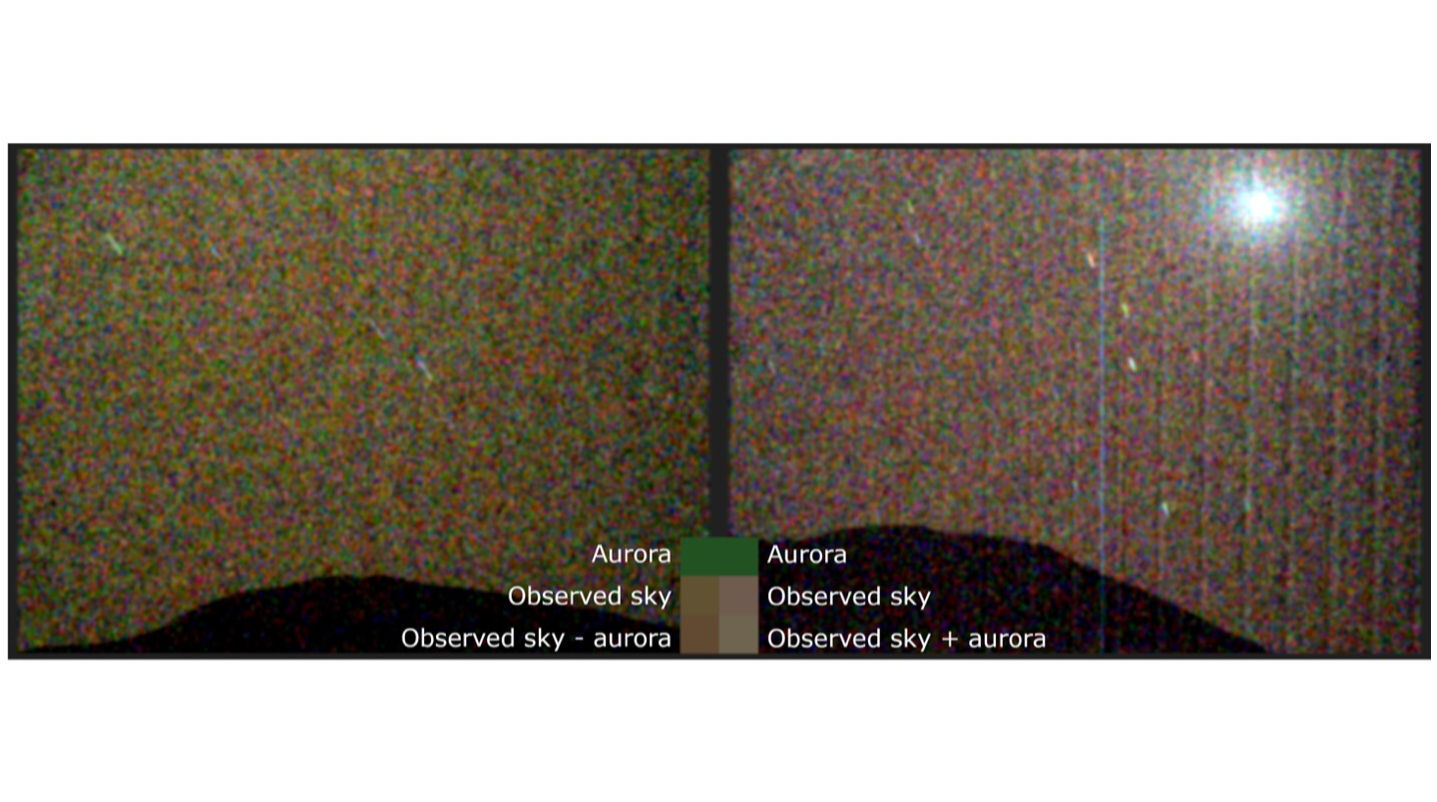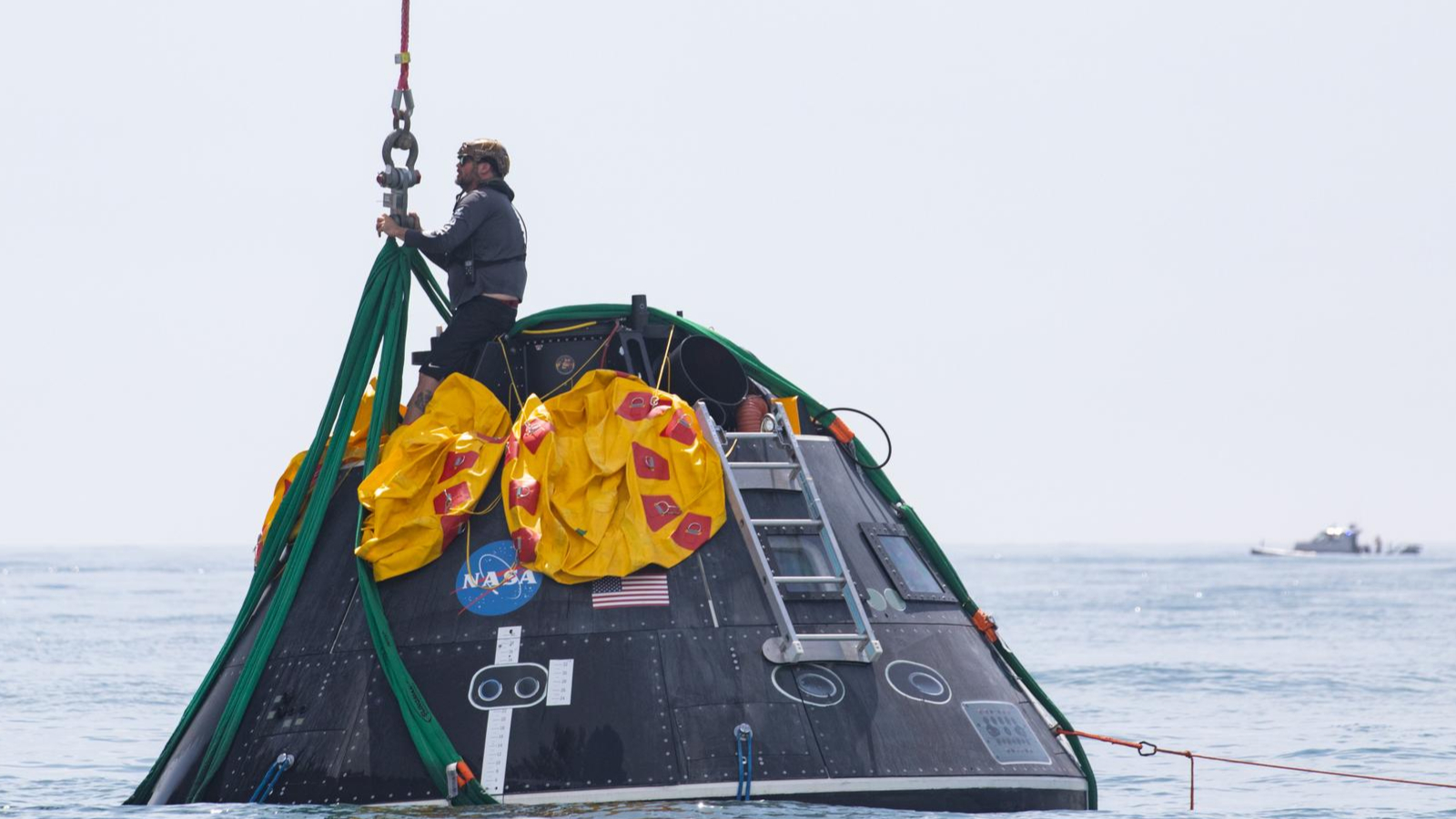
NASA's Perseverance rover just made skywatching history.
The car-sized Perseverance spied auroras in Mars' skies in mid-March, becoming the first-ever spacecraft to witness such a light show from the surface of another planet.
"This exciting discovery opens up new possibilities for auroral research and confirms that auroras could be visible to future astronauts on Mars' surface," Elise Knutsen, a postdoctoral researcher at the University of Oslo in Norway and lead author of a study about the news, said in a statement.
Auroras occur when charged particles from the sun collide with molecules in planetary atmospheres. Earth's magnetic field channels most of those solar particles toward its poles, which is why auroral displays on our planet are generally limited to high latitudes — that is, except on certain occasions when particularly big clouds of solar plasma known as coronal mass ejections (CMEs) hit us.
Mars, however, doesn't have a global magnetic field anymore, it disappeared long ago and caused the once-wet world to dry out. Because of this, the Red Planet's auroral shows are different than those we get on Earth. The arrival of a big CME, for example, tends to set the whole Martian sky aglow.
These alien auroras have been observed from Mars orbit before, but no surface craft had managed to capture the phenomenon. Knutsen and her team set out to make history.
They calculated the best angle at which to point two key Perseverance instruments — its MastCam-Z camera system and SuperCam spectrometer — at the Martian sky. They also worked with researchers at NASA’s Goddard Space Flight Center in Maryland to identify Mars-bound CMEs that could spark detectable auroral displays.
Breaking space news, the latest updates on rocket launches, skywatching events and more!
The Goddard scientists flagged one such outburst on March 15. That alert was noticed by space physicist Christina Lee of the University of California, Berkeley, the space weather lead for NASA's MAVEN Mars orbiter. Lee, in turn, issued a notice to other Mars mission teams, including Knutsen and her colleagues.
"When we saw the strength of this one, we estimated it could trigger aurora bright enough for our instruments to detect," Knutsen said.
That was indeed the case. The CME slammed into Mars' thin atmosphere a few days later, generating a green aurora that was pretty much uniform across the Red Planet's skies. (As on Earth, the green auroral glow was caused by light-emitting oxygen atoms.)
MAVEN and another Mars orbiter, Europe's Mars Express, detected solar energetic particles in the atmosphere at the time, confirming that Perseverance did indeed record a Martian aurora from the planet's surface.
"This was a fantastic example of cross-mission coordination," MAVEN Principal Investigator Shannon Curry, a research scientist at the Laboratory for Atmospheric and Space Physics at the University of Colorado Boulder, said in the same statement.
"We all worked together quickly to facilitate this observation and are thrilled to have finally gotten a sneak peek of what astronauts will be able to see there some day,” added Curry, a co-author of the new paper.
Perseverance's aurora observations, which were described in a study published Wednesday (May 14) in the journal Science Advances, have more than just gee-whiz appeal. After all, auroras result from space weather, which can have profound effects on spacecraft and people that venture beyond our planet's protective magnetic bubble.
"Perseverance’s observations of the visible-light aurora confirm a new way to study these phenomena that’s complementary to what we can observe with our Mars orbiters," Katie Stack Morgan, acting project scientist for Perseverance at NASA’s Jet Propulsion Laboratory in Southern California who was not part of the study team, said in the statement.
"A better understanding of auroras and the conditions around Mars that lead to their formation are especially important as we prepare to send human explorers there safely," added Stack Morgan.
Join our Space Forums to keep talking space on the latest missions, night sky and more! And if you have a news tip, correction or comment, let us know at: community@space.com.

Michael Wall is a Senior Space Writer with Space.com and joined the team in 2010. He primarily covers exoplanets, spaceflight and military space, but has been known to dabble in the space art beat. His book about the search for alien life, "Out There," was published on Nov. 13, 2018. Before becoming a science writer, Michael worked as a herpetologist and wildlife biologist. He has a Ph.D. in evolutionary biology from the University of Sydney, Australia, a bachelor's degree from the University of Arizona, and a graduate certificate in science writing from the University of California, Santa Cruz. To find out what his latest project is, you can follow Michael on Twitter.
You must confirm your public display name before commenting
Please logout and then login again, you will then be prompted to enter your display name.
